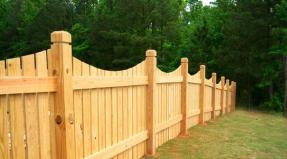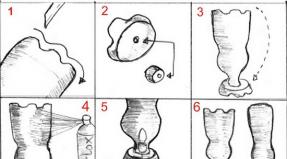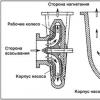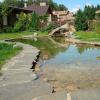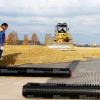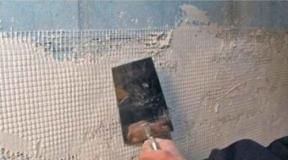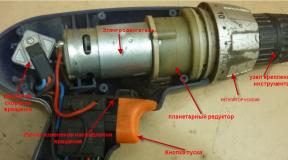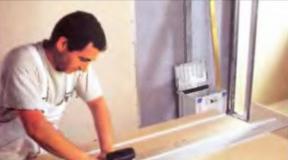Geogrid - how it can be applied in the country or a suburban area
Geogrid is a relatively new direction in the development of building materials. Since its appearance on the market, the geotechnical grid has become a rather popular product, helping to carry out various landscape works. This innovation is successfully applied to prevent soil displacement, reinforcement, reinforcement of slopes, provides strength, long-term operation of parking areas.
Geogrid - photo of laying
The main characteristics of the geogrid are:
- resistance to corrosion, temperature extremes;
- obstacle to soil movements;
- providing a comfortable environment for plants (their root system);
- repetition of the features of the soil relief during laying;
- an obstacle to siltation;
- environmental Safety;
- ease of installation or dismantling;
- acceptable cost.
Geogrid - what is it?
Geogrid is a honeycomb-shaped building material made from geosynthetic polymer. The size of the honeycomb cells will vary depending on the purpose of the grid. The height of the honeycomb, as well as the length or width, can be different. High-strength welded seams guarantee secure fastening of staggered sections.

Biaxial geogrid, application:
- for reconstruction, fixation of the base of the roadway of various types (creates a separating and reinforcing layer);
- strengthening the banks of artificial reservoirs;
- in different directions of landscape gardening design;
- in the construction of parking lots or parking lots for cars of any kind.
Geogrid for paths in the country or suburban area
This material can be used in the construction of garden paths, as well as strengthen existing ones.
To make a solid dirt track, it is enough to have:
- bayonet, shovel;
- a wheelbarrow for soil removal;
- crushed stone or small gravel;
- device for manual compaction of soil;
- a skein of rope, pegs (to mark boundaries);
- geotextiles (optional);
- geogrid with appropriate anchors.
The boundaries of the path are marked with pegs, while it is necessary to take into account the width of the future curb. According to the conceived design, there may be no curb, but it must be borne in mind that its presence provides the track with protection from deformation.
Further, the soil layer is removed, the "working surface" deepens. The trench depth is usually 25 cm, but if the soil on the site is predominantly clay or peaty, then the digging depth can be increased to 30-40 cm.
When the excess soil is removed, the base of the future path is carefully rammed, followed by the laying of the geogrid, its backfill. If on your site the type of soil is peaty, clayey or boggy, then it is recommended to lay geotextiles (polypropylene and / or polyester geotextile) at the bottom of the trench.

Geogrid for slope strengthening
Even steep or more gentle slopes can be strengthened with a geotechnical grid. In the form of fillers for cells, soil, crushed stone, sand, pebbles, and others can be used. It should be borne in mind that the steeper the slope, the wider the width of the side sections of the grating should be.
The slope reinforcement geogrid is the most popular, convenient material for landslide prevention. These honeycomb structures are reliable, have good extensibility, help transform areas with difficult terrain into individual landscape features that have a decorative function.
Reinforcement with a geogrid - stages of laying on a slope:
- Before laying the grating, the slope is leveled as much as possible.
- Slope boundaries are marked according to the steepness.
- Geotextiles are laid on the slope.
- According to the marks, high-strength anchors are installed (60-90 cm).
- The geogrid is pulled over the anchors, the process starts from the tops of the slope.
- The stretched lattice is fixed with L-shaped mounting anchors. The step of installing anchors is from 1 to 2 meters.
- At the end of the fixing, the honeycomb is filled (from top to bottom) with filler. The cells must be filled with a slide of at least 3-5 cm.


